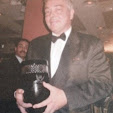IV.9. Borderline Forms:
Over the past decade, some documentaries, such as
those of the afore-mentioned Michael Moore, have enjoyed commercial success in
the United States, and the term documentary
has lost its pejorative edge for many commercial producers.
Unfortunately, this change of attitude has not led
to increased funding for documentary production; rather, it has led to an
increase in the production of commercial productions with a documentary veneer,
such as mockumentaries, docudramas, historical
dramas, reality-based television, docusoaps and other spin-offs . Some critics feel these genres employ features
of documentary, without actually being documentary,
hence frequently causing confusion.
They include:
Mockumentary: This term is now commonly used to
denote a fiction film shot in documentary style; it was invented by director
Rob Reiner as a tongue-in-cheek description of his 1984 comedy about an aging
rock band on a comeback tour titled, “This
is Spinal Tap”.[1]
However, “This is Spinal Tap” was
hardly the first film to employ this stylistic device; as noted in Wikipedia, mockumentaries “ may be either comedic or dramatic in form,
although comedic mockumentaries are more common. A dramatic mockumentary
(sometimes referred to as docufiction) should not be confused with docudrama, a fictional genre in which dramatic techniques are combined with documentary elements to depict real events.”[2]
There have been other examples of mockumentaries which led the audience to
believe they were documentaries exploring the intimate secrets of real people,
only to reveal at the end that, in fact, the stories were fictitious.
Essentially, the goal was to deceive the audience for dramatic effect. While this
is certainly a valid dramatic technique, two films aroused some controversy
because they succeeded so well in their deception – Mitchell Block’s “ No Lies”, about a woman who tells the
story of her rape, and Jim McBride’s “ David
Holtzman’s Diary” ( 1968).[3]
Perhaps the two most famous examples of what might
be called dramatic mockumentary were
the Italian director Gillo Pontocorvo’s “Battle
of Algiers (1966), an extraordinary film about the Algerian war for
independence from the French, and Peter Watkins’ The War Game” (1965),[4] an
equally extraordinary television drama about the effects of a thermonuclear war
on the ground in England.
Both of these films employed a cinema verite style to throw the spectator into the middle of the
intense action, and both films received many awards. Both films also received the
ultimate approval for cinematic subversion – being banned for two decades – “Battle of Algiers “in France , and “The War Game” in England.[5]
In all cases, however, mockumentaries, no matter how excellent they may be in cinematic
terms, are not documentaries. Rather, they are fiction cinema using
documentary conventions for dramatic effect.
The same might be said of the next category – Docudrama:
Docudrama: Wikipedia defines docudrama as:“
a documentary-style genre of radio and television programming and staged theatre that features dramatized re-enactments of actual historical events.”[6]
This term was
created to describe a television drama based on a true story, but adapted for the television screen. Hollywood
has always taken such great liberties with historical figures and events.
Television viewers, on the other hand, have been a bit more demanding when it
came to depiction of real people and events. The term docudrama grants the commercial television producers a legal
exemption from demands for accurate portrayals. The producer purchases the
rights to the story, and then makes whatever changes deemed necessary.
Such is the nature of commercial television, and no
one in broadcasting would confuse a documentary
with a docudrama. Unfortunately,
as both Stalin and Hitler knew, spectators frequently fail to make this
distinction, since people tend to believe what they see, even if they know it
to be fictitious. Hence the need for government or non-profit television
stations which can broadcast documentaries,
which at least have some pretense of accuracy and veracity.
As mentioned before, the issue of re-enactment in documentary has always
been a bone of contention. Purists might argue, like Nichols, that re-enactment
does not belong in documentaries. However, others might be of the opinion that
a certain amount of re-enactment is permissible, as long as it is overt, and
cannot be construed as being deceptive.
Errol Morris
‘excellent documentary about a man wrongly convicted of murder in Texas, “The Thin Blue Line” (1988), is a good
example of the second case. Morris
combines interviews with some clearly staged visual re-enactment of events, but
he manages to do so in a restrained, neutral fashion that merely illustrates
the testimony of the person being interviewed, rather than attempting to
re-create the event itself.
The characters are played by actors, but could just
as well be played by animated faceless robots. The images are the kind one
might expect to see in a courtroom, carefully designed not to prejudice the
jury – or the spectator - in one way or another. [7] Simultaneously,
these images allow Morris to visually punctuate his many talking head
interviews and dramatize them with the help of music from Phillip Glass. Therefore,
“The Thin Blue Line” would fall well
within our parameters for documentary.[8]
However, docudramas would not.
[1]
Link to trailer for “This is Spinal Tap”:
http://www.youtube.com/watch?v=EDnjHSI8BRs
[2] http://en.wikipedia.org/wiki/Mockumentary
[3]
Link to “ David Holtzman’s Diary” http://www.youtube.com/watch?v=P5E9GEY05ZM
[4]
Link to “The War Game”: http://www.youtube.com/watch?v=Dox_cmm4feE
[6] http://en.wikipedia.org/wiki/Docudrama
[7]
Jon Else, Director of the University of Calfornia School of Journalism and
Documentary, feels the determining factor should be if the re-enactment is not overt, but deceptive.( The Documentary
Filmmakers’ Handbook) Edited by Genevieve Jolliffe and Andrew ZinnesFirst
Edition, Continuum, 2006.p.19
[8]
Link to the complete “The Thin Blue
Line”: http://www.youtube.com/watch?v=zUJfrW1hNBk
